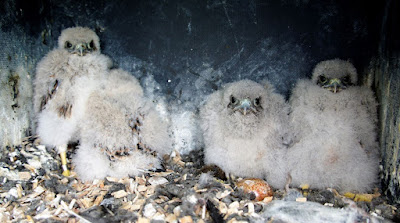Things have been quite quiet so I took a sabbatical from blogging but kept up with news and views, good and bad, whether birds or life in general.
A trip to Cockerham on 22 June saw a meagre catch of just 8 birds that included the first two juvenile Linnets of Project Linnet 2022 but zero juveniles of both Sedge Warblers and Reed Warblers - yet another indication of our terribly cold spring, global cooling and the beginning of the next Ice Age.
Since then a week or two of weather watching resulted in a decision to visit the Sand Martins at Cockerham, our second go at catching. The first visit of the season took place on 4 June, a trip that resulted in a successful catch of 42 adults, including "8911708 Museum Paris", a French ringed Sand Martin. We have yet to hear from the French Ringing Scheme and of that bird’s original capture.
Today, Thursday and the last day of June I met up with Andy, Will and Bryan at the appointed 0630 to zero wind at the quarry face where the Sand Martins have their hard–won burrows.
It appeared that numbers had increased since our last visit and we estimated 150-200 Sand Martins around the colony.
We were kept busy and confirmed the earlier guesstimate with a catch of 80 Sand Martins, 51 new adults, 16 juveniles of the year and 13 recaptures, some from earlier this year, and others from 2021.
A few of the juveniles were very young and probably left their burrows in the last day or two. To catch so many new adults so soon after our visit of 4 June suggests new adult arrivals, ones that stayed to breed and swelled numbers in the period between 4 June and 30 June.
Juvenile Sand Martin
Juvenile Sand Martin
Other birds seen this morning - 2 Common Tern, 2 Great Created Grebe, 2 Goldfinch, 3 Curlew, 2 Oystercatcher, 3 Pied Wagtail, 45 Mallard
Back soon after more watching and waiting with more news & views of birds and Lancashire Life.
Linking this weekend to Eileen's Blogspot and Anni in Texas.






























.png)




























